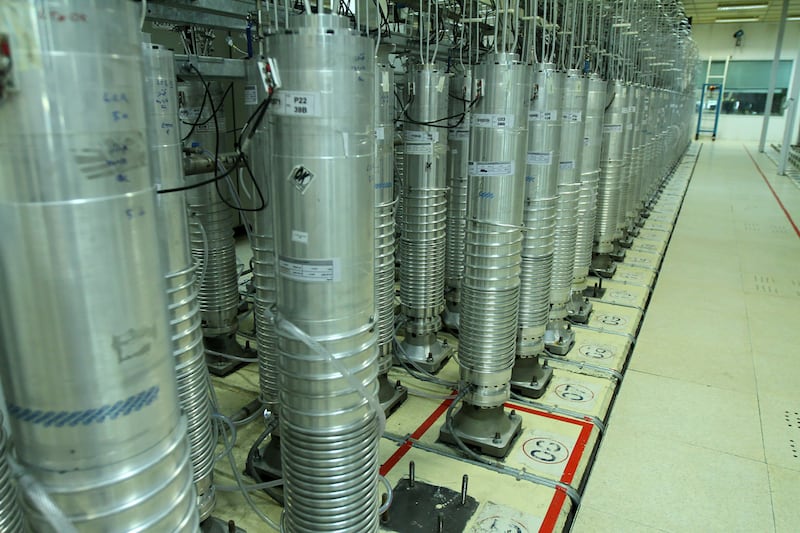Iran is expanding its enrichment of uranium beyond the threshold of 20 per cent purity at the Natanz plant, the International Atomic Energy Agency says.
The country is already enriching to 60 per cent, but this does not involve keeping the product, the UN nuclear watchdog said on Monday.
The move will probably help Iran refine its knowledge of the enrichment process, something western powers generally condemn because it is irreversible. However, since this time the product is not being collected, it will not immediately accelerate Iran's production of uranium enriched to close to weapons-grade.
It has, however, prompted the IAEA to “increase the frequency and intensity of its safeguards activities” at the aboveground Pilot Fuel Enrichment Plant (PFEP) at Natanz, the IAEA said in a report seen by Reuters.
Around 90 per cent uranium is considered weapons-grade.
Outlining the report, the IAEA said Iran informed it last week of changes to the set-up of centrifuges — the machines that enrich uranium at the plant. Iran would then feed uranium enriched to up to 20 per cent into limited numbers of extra centrifuges without collecting the product.
“On 25 October 2021, the agency verified that Iran began feeding (uranium hexafluoride gas) enriched up to 20 per cent U-235 into a single IR-6 centrifuge in R & line 2 at PFEP and that the resulting product and tails streams were being recombined,” the IAEA report said, meaning that after the enriched product was separated it was mixed with the centrifuge's waste and not kept.
Iran said it planned to also feed uranium enriched to up to 20 per cent into other single centrifuges or small to medium-sized cascades, or clusters, of machines on the same line, but those were not being fed at the time, the IAEA said.
Iran has yet to announce a date to resume discussions in Vienna about reviving the 2015 nuclear pact under which it curbed its nuclear programme in return for relief from US, EU and UN economic sanctions.
Then-US president Donald Trump abandoned the pact in 2018 and reimposed harsh US sanctions. About a year later, Iran started violating some of the deal's limits on uranium enrichment.






